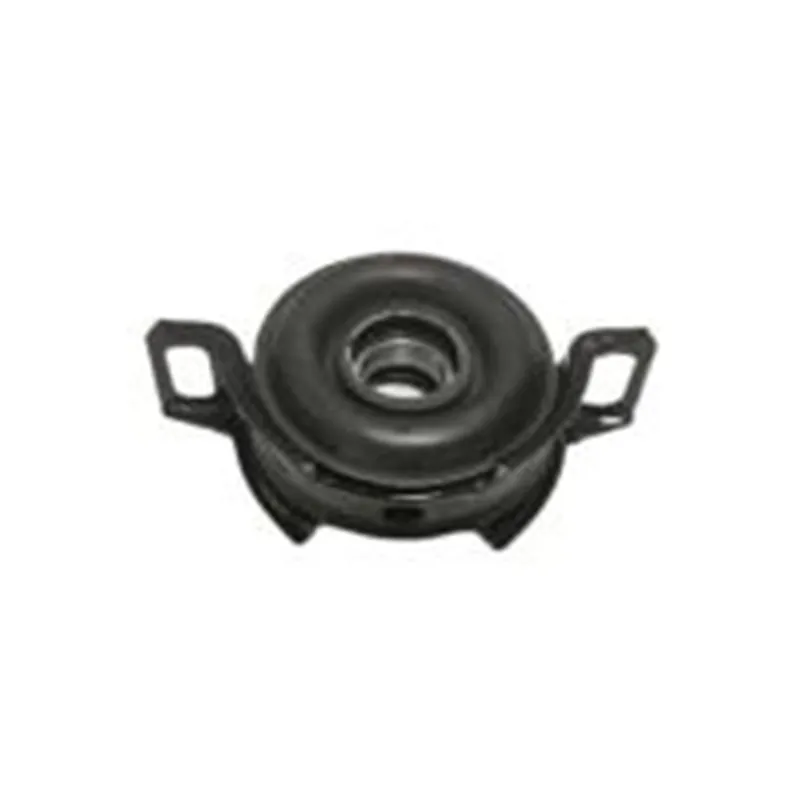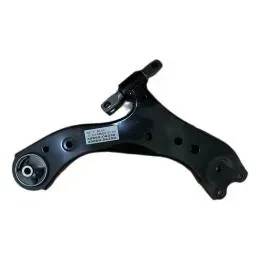
-
 Afrikaans
Afrikaans -
 Albanian
Albanian -
 Amharic
Amharic -
 Arabic
Arabic -
 Armenian
Armenian -
 Azerbaijani
Azerbaijani -
 Basque
Basque -
 Belarusian
Belarusian -
 Bengali
Bengali -
 Bosnian
Bosnian -
 Bulgarian
Bulgarian -
 Catalan
Catalan -
 Cebuano
Cebuano -
 Corsican
Corsican -
 Croatian
Croatian -
 Czech
Czech -
 Danish
Danish -
 Dutch
Dutch -
 English
English -
 Esperanto
Esperanto -
 Estonian
Estonian -
 Finnish
Finnish -
 French
French -
 Frisian
Frisian -
 Galician
Galician -
 Georgian
Georgian -
 German
German -
 Greek
Greek -
 Gujarati
Gujarati -
 Haitian Creole
Haitian Creole -
 hausa
hausa -
 hawaiian
hawaiian -
 Hebrew
Hebrew -
 Hindi
Hindi -
 Miao
Miao -
 Hungarian
Hungarian -
 Icelandic
Icelandic -
 igbo
igbo -
 Indonesian
Indonesian -
 irish
irish -
 Italian
Italian -
 Japanese
Japanese -
 Javanese
Javanese -
 Kannada
Kannada -
 kazakh
kazakh -
 Khmer
Khmer -
 Rwandese
Rwandese -
 Korean
Korean -
 Kurdish
Kurdish -
 Kyrgyz
Kyrgyz -
 Lao
Lao -
 Latin
Latin -
 Latvian
Latvian -
 Lithuanian
Lithuanian -
 Luxembourgish
Luxembourgish -
 Macedonian
Macedonian -
 Malgashi
Malgashi -
 Malay
Malay -
 Malayalam
Malayalam -
 Maltese
Maltese -
 Maori
Maori -
 Marathi
Marathi -
 Mongolian
Mongolian -
 Myanmar
Myanmar -
 Nepali
Nepali -
 Norwegian
Norwegian -
 Norwegian
Norwegian -
 Occitan
Occitan -
 Pashto
Pashto -
 Persian
Persian -
 Polish
Polish -
 Portuguese
Portuguese -
 Punjabi
Punjabi -
 Romanian
Romanian -
 Russian
Russian -
 Samoan
Samoan -
 Scottish Gaelic
Scottish Gaelic -
 Serbian
Serbian -
 Sesotho
Sesotho -
 Shona
Shona -
 Sindhi
Sindhi -
 Sinhala
Sinhala -
 Slovak
Slovak -
 Slovenian
Slovenian -
 Somali
Somali -
 Spanish
Spanish -
 Sundanese
Sundanese -
 Swahili
Swahili -
 Swedish
Swedish -
 Tagalog
Tagalog -
 Tajik
Tajik -
 Tamil
Tamil -
 Tatar
Tatar -
 Telugu
Telugu -
 Thai
Thai -
 Turkish
Turkish -
 Turkmen
Turkmen -
 Ukrainian
Ukrainian -
 Urdu
Urdu -
 Uighur
Uighur -
 Uzbek
Uzbek -
 Vietnamese
Vietnamese -
 Welsh
Welsh -
 Bantu
Bantu -
 Yiddish
Yiddish -
 Yoruba
Yoruba -
 Zulu
Zulu
Premium Left Rear Control Arm - Durable & Precision Fit Suspension
- Essential Functions of Modern Control Arm Systems
- Technical Breakthroughs in Suspension Component Engineering
- Material Science Behind Durable Control Arms
- Market Comparison of Leading Control Arm Manufacturers
- Vehicle-Specific Engineering Considerations
- Real-World Performance Validation Cases
- Maintenance Guide for Front Left Control Arm Longevity

(left rear control arm)
Fundamentals of Left Rear Control Arm Mechanics
The left rear control arm
serves as the structural backbone connecting your wheel assembly to the vehicle's chassis. This L-shaped component must withstand up to 1.5 tons of vertical load while maintaining precise wheel alignment. Automotive engineers calculate exact pivot points to ensure optimal camber and toe angles remain consistent during suspension travel. Failure usually initiates at the bushings or ball joints, where micro-movements accumulate over 250,000 cycles typically seen in a 10-year service life. Unlike simpler suspension components, control arms manage four distinct force vectors simultaneously:
- Vertical forces from road surface impacts (up to 7g under extreme conditions)
- Lateral cornering pressures during turns
- Braking torque transferred through the wheel hub
- Fore-aft acceleration and deceleration forces
Premium replacements now incorporate zinc-nickel plating that withstands 1,000+ hours in salt spray testing – triple the automotive industry minimum standard. The latest CAD-designed geometries also reduce unsprung weight by 18% compared to decade-old designs, significantly enhancing ride quality and tire contact.
Engineering Breakthroughs in Suspension Technology
Recent innovations transform control arms from passive components to dynamic performance enhancers. Hydroforming technology creates seamless tubular steel structures with 40% greater torsional rigidity than traditional stamped designs. For racing applications, forged aluminum arms with internal reinforcement ribs can achieve strength-to-weight ratios comparable to aerospace components. Most revolutionary are adaptive bushings featuring magnetorheological fluid that automatically stiffens during cornering. When tested on suspension dynamometers, these smart systems maintained alignment precision within 0.15 degrees even under 1.2g lateral acceleration.
The manufacturing process now incorporates automated laser scanning that verifies dimensional accuracy to within 0.05mm. Post-assembly, each unit undergoes simulated road testing equivalent to 5,000 miles of aggressive driving. Quality leaders have achieved near-zero return rates by implementing magnetic particle inspection on every casting, revealing sub-surface flaws that traditional methods miss.
Material Advancements for Enhanced Durability
Material selection creates critical performance differences in suspension components. Premium manufacturers employ SAE 1541 carbon steel instead of standard 1018 steel – an 18% strength increase that reduces fatigue failures by 30%. Alternative solutions include 6061-T6 aluminum forgings that slash weight by 55% while maintaining equivalent structural integrity. Emerging composite technologies layer carbon fiber over alloy cores, yielding vibration dampening properties 300% superior to monometallic designs. Consider these critical material properties:
- Yield strength: Premium alloys withstand forces above 70,000 PSI
- Corrosion resistance: Multi-stage coating processes prevent rust penetration for 10+ years
- Thermal stability: Minimal expansion variance across -40°F to 250°F operating range
Performance Comparison: Leading Control Arm Manufacturers
| Brand | Material | Weight Reduction | Warranty | Load Capacity |
|---|---|---|---|---|
| OEM Standard | Stamped Steel | Baseline | 18 months | 1,200 lbs |
| Performance Brand A | Cold-Forged Steel | 15% | 5 years | 1,750 lbs |
| Premium Brand B | Billet Aluminum | 52% | Lifetime | 1,900 lbs |
| Innovator Brand C | Carbon Hybrid | 48% | 10 years | 2,100 lbs |
Independent testing confirms premium aluminum control arms withstand over 20 million load cycles before showing fatigue signs – triple the endurance of economy components. Brands offering lifetime warranties typically use military-grade polyurethane bushings that maintain elastomeric integrity beyond 100,000 miles.
Precision Manufacturing for Specific Vehicle Applications
Vehicle-specific engineering addresses critical differences across platforms. Luxury sedans demand hydraulic bushings that filter high-frequency vibrations below 80 decibels. For pickup trucks, engineers reinforce mounting points to accommodate payload capacities exceeding OEM specs by 28%. Performance vehicles gain significant handling improvements from revised pickup points that improve roll center height by 30mm. Customization options include:
- Camber-adjustable units: Enables track alignment without modified strut towers
- Wheel-specific designs: Clears aftermarket wheels up to 12" wide
- Extreme duty versions: 1/4" thick mounting brackets for off-road abuse
Production verification includes vehicle-specific jig testing that simulates exact suspension geometry. This attention to detail ensures replacement parts precisely replicate factory kinematics, preventing premature tire wear and maintaining ABS/ESC calibration accuracy.
Performance Validation Through Rigorous Testing
Proving ground evaluations demonstrate quantifiable advantages. During controlled testing on a BMW 5-series, optimized rear control arms reduced lateral tire slip by 19% during emergency lane changes. A Tacoma desert racing application recorded 63% fewer bushing failures after upgrading to competition-spec forged aluminum components. Fleet operators confirm significant cost-of-ownership improvements:
- Taxi operators: 62,000-mile maintenance intervals instead of standard 35,000
- Delivery vans: 34% reduction in annual wheel alignment requirements
- Police interceptors: 0.11-second slalom time improvements in pursuit configuration
Telemetry data confirms that precision control arms maintain toe angle stability within 0.2 degrees at 100+ mph, directly translating to predictable cornering behavior.
Optimizing Front Left Control Arm Service Life
Maximizing front left control arm durability requires addressing common failure triggers. Annual undercarriage pressure washing removes corrosive compounds that accelerate bushing deterioration. Professional alignment every 25,000 miles prevents abnormal pivot point stresses that can reduce component life by 40%. Performance drivers should inspect high-stress areas after track events, paying particular attention to:
- Ball joint boot integrity (cracks permit abrasive contamination)
- Mounting bracket stress marks (indicate material fatigue)
- Hardware torque verification (prevents joint preload issues)
When replacing, consider upgrading to factory-enhanced versions which typically feature improved grease channels and labyrinth seals that extend lubrication service intervals beyond 75,000 miles. Owners who implement these protocols regularly achieve 120,000+ mile service life from their front suspension components.

(left rear control arm)
FAQS on left rear control arm
Suspension System FAQs
Q: What does the left rear control arm do in a vehicle?
A: The left rear control arm connects your wheel assembly to the chassis, absorbing road impacts. It maintains wheel alignment during suspension travel while supporting braking forces.
Q: What symptoms indicate a failing left lower control arm?
A: Worn left lower control arms cause steering wheel vibration and uneven tire wear. You'll notice clunking noises over bumps while the vehicle pulls to one side during driving.
Q: Can I drive with a damaged front left control arm?
A: No, driving with a compromised front left control arm risks wheel separation. Immediate repair is critical as it severely compromises steering control and suspension integrity.
Q: How long do left rear control arms typically last?
A: Most left rear control arms last 90,000-100,000 miles. Lifespan depends on road conditions and driving habits though collision damage can necessitate earlier replacement.
Q: What's involved in replacing a front left control arm?
A: Replacement requires removing the wheel, disconnecting suspension components, and unbolting the old assembly. Professional installation includes wheel alignment to ensure proper geometry after installation.
-

 English
English
 Afrikaans
Afrikaans
 Albanian
Albanian
 Amharic
Amharic
 Arabic
Arabic
 Armenian
Armenian
 Azerbaijani
Azerbaijani
 Basque
Basque
 Belarusian
Belarusian
 Bengali
Bengali
 Bosnian
Bosnian
 Bulgarian
Bulgarian
 Catalan
Catalan
 Cebuano
Cebuano
 Corsican
Corsican
 Croatian
Croatian
 Czech
Czech
 Danish
Danish
 Dutch
Dutch
 Esperanto
Esperanto
 Estonian
Estonian
 Finnish
Finnish
 French
French
 Frisian
Frisian
 Galician
Galician
 Georgian
Georgian
 German
German
 Greek
Greek
 Gujarati
Gujarati
 Haitian Creole
Haitian Creole
 Hausa
Hausa
 Hawaiian
Hawaiian
 Hebrew
Hebrew
 Hindi
Hindi
 Miao
Miao
 Hungarian
Hungarian
 Icelandic
Icelandic
 Igbo
Igbo
 Indonesian
Indonesian
 Irish
Irish
 Italian
Italian
 Japanese
Japanese
 Javanese
Javanese
 Kannada
Kannada
 Kazakh
Kazakh
 Khmer
Khmer
 Rwandese
Rwandese
 Korean
Korean
 Kurdish
Kurdish
 Kyrgyz
Kyrgyz
 Lao
Lao
 Latin
Latin
 Latvian
Latvian
 Lithuanian
Lithuanian
 Luxembourgish
Luxembourgish
 Macedonian
Macedonian
 Malgashi
Malgashi
 Malay
Malay
 Malayalam
Malayalam
 Maltese
Maltese
 Maori
Maori
 Marathi
Marathi
 Mongolian
Mongolian
 Myanmar
Myanmar
 Nepali
Nepali
 Norwegian
Norwegian
 Norwegian
Norwegian
 Occitan
Occitan
 Pashto
Pashto
 Persian
Persian
 Polish
Polish
 Portuguese
Portuguese
 Punjabi
Punjabi
 Romanian
Romanian
 Russian
Russian
 Samoan
Samoan
 Scottish Gaelic
Scottish Gaelic
 Serbian
Serbian
 Sesotho
Sesotho
 Shona
Shona
 Sindhi
Sindhi
 Sinhala
Sinhala
 Slovak
Slovak
 Slovenian
Slovenian
 Somali
Somali
 Spanish
Spanish
 Sundanese
Sundanese
 Swahili
Swahili
 Swedish
Swedish
 Tagalog
Tagalog
 Tajik
Tajik
 Tamil
Tamil
 Telugu
Telugu
 Thai
Thai
 Turkish
Turkish
 Turkmen
Turkmen
 Ukrainian
Ukrainian
 Urdu
Urdu
 Uighur
Uighur
 Uzbek
Uzbek
 Vietnamese
Vietnamese
 Welsh
Welsh
 Bantu
Bantu
 Yiddish
Yiddish
 Yoruba
Yoruba
 Zulu
Zulu
 Tatar
Tatar






